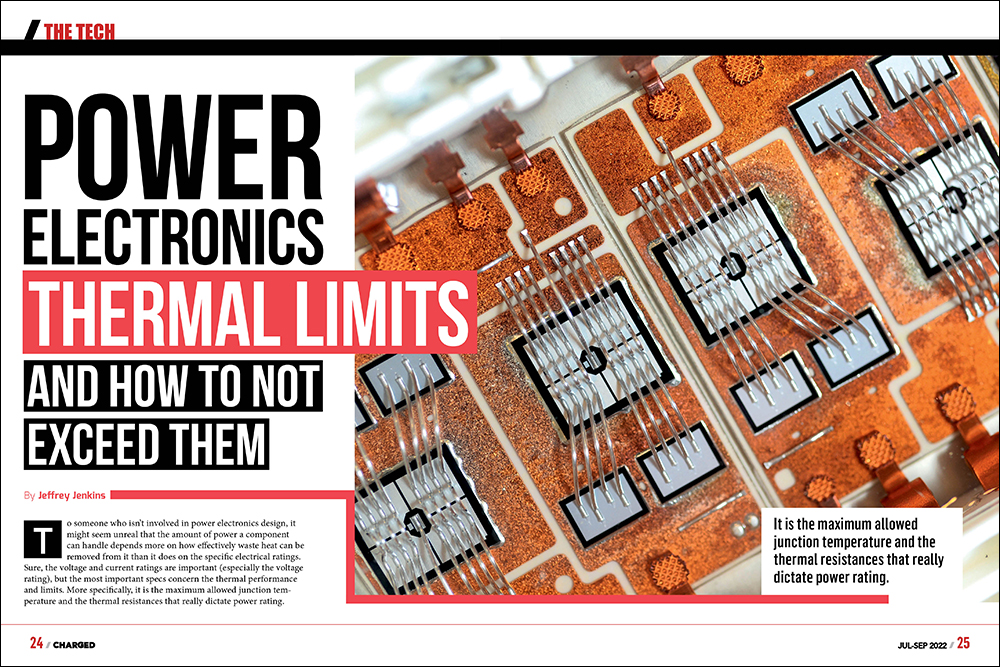To someone who isn’t involved in power electronics design, it might seem unreal that the amount of power a component can handle depends more on how effectively waste heat can be removed from it than it does on the specific electrical ratings. Sure, the voltage and current ratings are important (especially the voltage rating), but the most important specs concern the thermal performance and limits. More specifically, it is the maximum allowed junction temperature and the thermal resistances that really dictate power rating.
For example, a few key specs from the datasheet for a modern Silicon Carbide (SiC) MOSFET in a standard TO-247 package will illustrate the point:
- Maximum junction temperature: TJ[max] – 175° C
- Maximum continuous drain current (with case @ 25° C): Id – 115 A
- Drain-source on-resistance: RDS[on] – 16 mΩ typical; 28.8 mΩ max
- Thermal resistance, junction to case: Rth[j-c] – 0.27° C / W
Pour en savoir plus : Power electronics thermal limits and how to not exceed them

